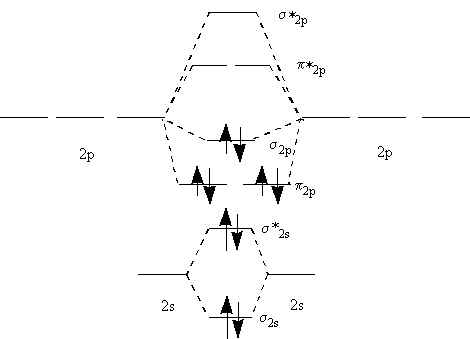| Vibrational1 At the DZV theory level, the vibrational frequency of N2 was calculated as 2590.35cm-1 and literature values place the vibrational frequency of N2 to be 2359cm-1 . To see an animation of molecular vibrational states, click here. |
| Potential Energy of Bond Stretching Below is a graph showing the potential energy of bond stretching for a N2 molecules at different basis sets. It is easily seen that the higher the basis set, the better the calculated bond length. The red line shows that the DZV calculations resulted in the lowest energy value, thus meaning it is the most accurate basis set to use when determining the potential energy of bond length.  |
